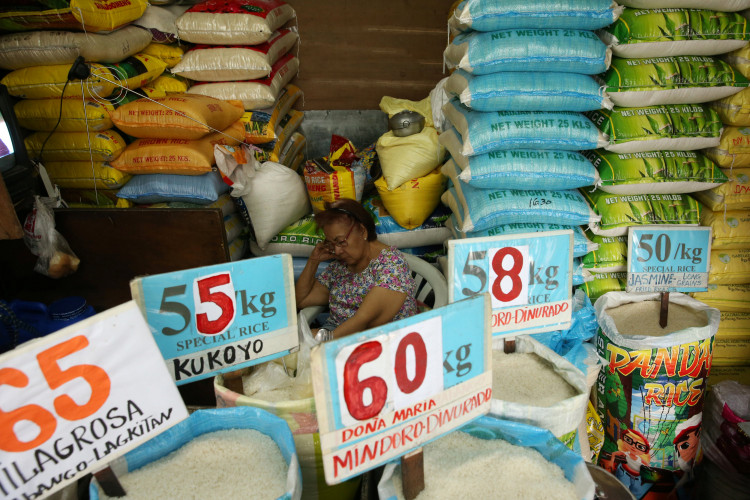The Philippine Statistics Authority announced on Wednesday the inflation or the rate of increase in the prices of goods hits 6.4 percent in the Philippines just this August which exceeds the initial estimates of certain market watchers.
According to the CNN Philippines, the latest figure announced by the PSA registered higher than last month's 5.7 percent.
National agencies such as the Bangko Sentral ng Pilipinas (BSP), the country's central banking authority, pegged forecast figures around 5.9 percent. The national Finance Department, on the other hand, settles the ballpark figure at 0.1 percent lower than the latter's estimates.
The publication's in-house economic analysts, meanwhile, polled a 6 percent median forecast for this month's inflation rate.
With this current surging rate, the Philippine government under President Rodrigo Duterte is more than likely to miss the target of keeping the average inflation in 2018 within 2 percent to maximum 4 percent, a report from Rappler said.
The areas where these economic changes are strongly felt include food and non-alcoholic beverages where prices increased at 8.5 percent. Alcoholic beverages and tobacco, on the other hand, sees the highest with a 21.6 percent increase.
The country's health services, meanwhile, saw a 4 percent upsurge while the recreation and culture sector is up by a meager 2.4 percent.
The part of the Asian nation that was hit the most by the market inflation is at the National Capital Region (NCR) where there's a major uptrend on the prices of food, transportation, goods, and services, as well as in recreational activities.
In Metro Manila, for example, the inflation rate is adjusted at 7 percent from 6.5 percent last month.
Outside Manila, the rate is relatively low at 6.2 percent, which is up to almost 1 percent from the previous month.
According to reports, the only way for the Duterte administration to stifle the inflation rate to fall only within the projected range is to revise its existing monetary and trade policies. Providing more subsidy options for its poor is also seen as an immediate remedy to the constricting economy.
Economists are saying that the elevated prices of goods in the Philippines, in turn, affected the growth of the country's economy.
According to a report, the Philippine Gross Domestic Product (GDP) grew to a mere 6 percent in the second quarter of 2018 which is quite indicative of market's failure to meet estimates.
BSP Governor Nestor Espenilla told CNN that the ever-increasing global oil prices coupled with the weakness of the Philippine peso against the US dollar largely contributed to the inflation.






